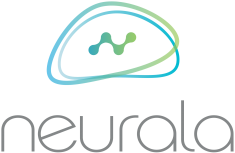Neurala Patents ‘Whole Brain’ Approach to AI, the Basis of the Next Generation of AI
Industry: Technology
New method uses an integrated approach that more closely mimics the brain for significantly faster and more effective artificial intelligence
Boston, MA (PRUnderground) April 25th, 2017
A new patent for “whole brain” systems for autonomous robotic control has been issued by the U.S. Patent Office to Neurala, the software company that invented The Neurala Brain, a deep learning neural networks platform. This new invention will enable AI to function more like a human brain because it integrates multiple brain areas.
 Human brains integrate sight, sound and other senses when making a decision, but existing AI systems do not. Traditional AI systems are engineered by first implementing separate subsystems (for instance, visual and auditory perception, spatial navigation and obstacle avoidance), and then they attempt to integrate them in a unified system. In biological brains the different senses work together to achieve a task. For example, a brain may consider the sight and sound of a moving car to estimate its position and place that car in a “mental map” of the world. A whole brain AI system, which acts like the human brain, will be significantly better at performing complex tasks because of this native integration that enables different senses and modules to complement each other’s deficiencies and shortcomings.
Human brains integrate sight, sound and other senses when making a decision, but existing AI systems do not. Traditional AI systems are engineered by first implementing separate subsystems (for instance, visual and auditory perception, spatial navigation and obstacle avoidance), and then they attempt to integrate them in a unified system. In biological brains the different senses work together to achieve a task. For example, a brain may consider the sight and sound of a moving car to estimate its position and place that car in a “mental map” of the world. A whole brain AI system, which acts like the human brain, will be significantly better at performing complex tasks because of this native integration that enables different senses and modules to complement each other’s deficiencies and shortcomings.
“Integrating advanced behaviors into a whole brain system for robots and drones represents the future of artificial intelligence,” explained Massimiliano “Max” Versace, Neurala co-founder and CEO. “We’re providing a key technological element at a time when the robotics market is poised to explode. Neurala can now give devices the ability to navigate and understand the world in the same the way that living creatures do. In effect, this patent reflects what artificial intelligence is going to look like.”
The patent was published as U.S. Patent No. 9,626,566, entitled “Methods and Apparatus for Autonomous Robotic Control.” The newly-patented Neurala method can run on Graphic Processing Units (GPUs), CPUs, or a heterogeneous mix of these processors, as well as sensors, depending on requirements for application processing speed and accuracy.
Versace compared today’s advanced technology to the technology scenario ten years ago, when Neurala filed a patent on GPU computing related to deep learning neural networks for AI. “Back then, very few were looking at GPUs as the next big thing, and people were assembling massive CPU servers, whereas Neurala was specializing in running ‘brains’ on GPUs,” said Versace.
Neurala’s bet was well placed: today GPUs are dominating the AI landscape, and hundreds of both large companies, from Google, Microsoft and Amazon to SAP and Oracle, and small companies are using them to accelerate and improve their products. “And now the rest of the AI world is focused on one specific, small set of neural networks for object recognition, while Neurala is working on the ‘whole brain’ systems that are necessary for intelligent and autonomous behavior,” Versace explained.
Neurala’s patent will make once complex and costly processes affordable for a wide range of consumer and business-to-business applications, Versace concluded. “Our new patent is really a breakthrough in terms of low-cost sensing for mass-market uses of robotics,” he added. “We learned from our work with NASA how to execute complex tasks with whole brains using a lean sensor/compute package. Now we will make this easy for a wide variety of commercial uses, enabling our customers to move to the next stage of deployment in their drones, robots and self-driving car applications.”
The new patent will add to Neurala’s existing intellectual property portfolio, currently consisting of two U.S. utility patents, five foreign design patents, and nine pending utility patent applications worldwide.
About Neurala
Neurala, Inc. (https://www.neurala.com) is a software company that developed The Neurala Brain—deep learning neural network software that makes smart products like robots, drones, toys, self-driving cars and smart cameras more autonomous, engaging and useful. Neurala provides off-the-shelf and customized solutions ranging from high-end applications to inexpensive everyday consumer products. With the Neurala Brains for Bots Software Development Kit (SDK) and an ordinary camera, products can learn people and objects, recognize them in a video stream, find them in the video, and track them as they move. The Neurala Brain is based on technology originally developed for NASA and the U.S. Air Force. Current customers include Motorola Solutions, Parrot and Teal Drones. Follow Neurala on Twitter at @Neurala and on Facebook, YouTube and LinkedIn.
Press Contact
Alessandra Nagy
(714) 310-4439

